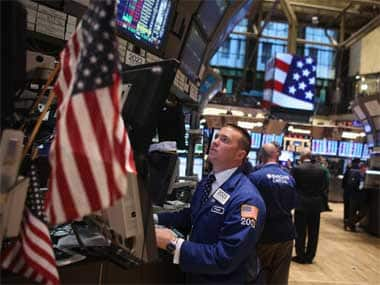US stocks climbed on Tuesday as stronger economic data fueled gains in technology stocks, but the euro fell against the dollar on fears that the European debt crisis could engulf top-rated nations such as France.
Oil prices finished at a 16-week high after data showed US retail sales in October rose more than forecast by economists, a sign that the world’s largest economy started the fourth quarter with some vigour.
[caption id=“attachment_131966” align=“alignleft” width=“380” caption=“US stocks climbed on Tuesday as stronger economic data fueled gains in technology stocks. Getty Images”]
 [/caption]
[/caption]
The recovery in stocks took some of the safe-haven appeal away from US Treasuries. In Europe, however, Italian bond yields climbed back to levels considered unsustainable, while the premium paid by 10-year French bonds over comparable German Bunds hit euro-era highs.
“The economic numbers in the US have improved, (but) everything in Europe is a matter of uncertainty, and the markets never like uncertainty,” said Bryant Evans, investment adviser and portfolio manager at Cozad Asset Management in Champaign, Illinois.
The three major US stock indexes had a choppy morning, but climbed back into positive territory in the afternoon. The Nasdaq finished wiht a gain of more than 1 percent as shares of Apple jumped 2.5 percent.
The Dow Jones industrial average rose 17.18 points, or 0.14 percent, to end at 12,096.16, while the Standard & Poor’s 500 Index gained 6.03 points, or 0.48 percent, to finish at 1,257.81. The Nasdaq Composite Index climbed 28.98 points, or 1.09 percent, to close at 2,686.20.
Still, in Europe, the FTSEurofirst 300 index slipped 0.5 percent to end at 970.17. An index of global stocks declined 0.4 percent.
Time for the ECB’s bazooka?
The euro slid 0.7 percent against the dollar to $1.3526 as borrowing costs of troubled European countries rose again. It also hit a five-week low against the yen at 103.95.
Italian 10-year bond yields rose above 7 percent, a level considered unsustainable for the country to fund its borrowing needs, given its sluggish economy. Spanish 10-year bond yields rose to 6.3 percent.
Many analysts believe the only option to stem the uncertainty is for the European Central Bank to buy large amounts of bonds without drying up liquidity from the purchases, in a strategy similar to the quantitative easing undertaken by the US and UK central banks.
The ECB has continued its bond purchases but has repeatedly said it is up to individual governments to put their fiscal houses in order.
“As long as the (ECB) continues to be unwilling to become the lender of last resort and really pull out the bazooka, you are going to continue to see these scares,” said Oliver Pursche, president of Gary Goldberg Financial Services in Suffern, New York.
Yields on 10-year US Treasuries initially fell below 2 percent as investors rushed to the perceived safety of US government debt. As stocks recovered, however, the 10-year note’s price dipped 1/32, sending its yield up to 2.04 percent.
US December crude oil gained $1.23, or 1.25 percent, to settle at $99.37 a barrel, a 16-week high.
Reuters
)